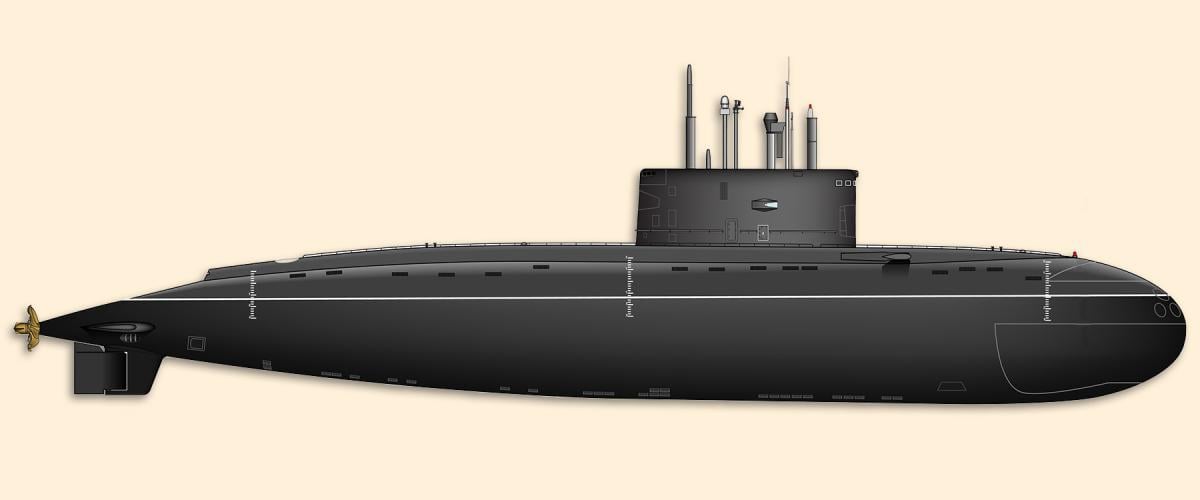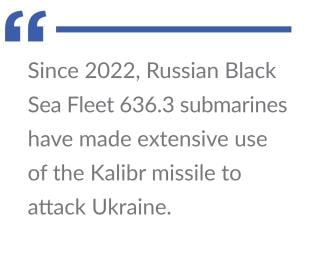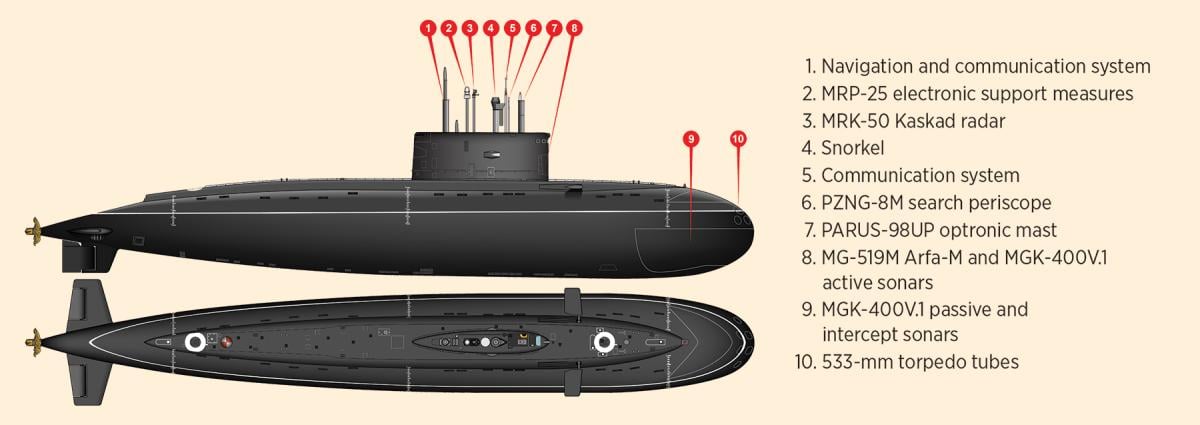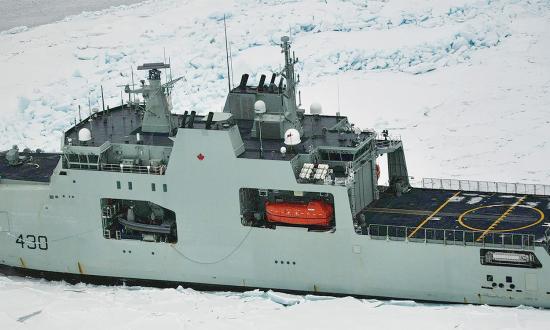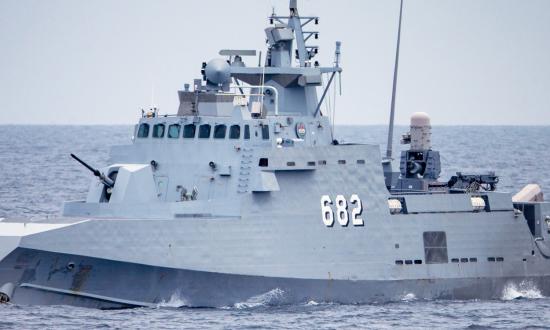Russia’s Kilo-class diesel-electric submarine is one of the most successful naval programs in modern history. More than 70 Kilo-class units have been built during the past 40-plus years, and more than 60 remain in service with the navies of Algeria, China, India, Iran, Myanmar, Poland, Vietnam, and Russia. New and improved models are still being built, with deliveries planned well into the future.
Design work on the initial Project 877 Kilo class began in the Soviet Union in 1974 at the Rubin Design Bureau. The first submarines entered service in the early 1980s. In the following decades, construction has taken place at multiple Soviet/Russian shipyards, progressing from the 877 design in the 1980s to the lengthened 636 design in the 1990s. The 636, often called the Improved Kilo or Kilo II submarine, incorporated across-the-board enhancements. The 636 submarines featured improved quieting, propulsion, and automation. Beginning in the 2010s, the 636 was further upgraded into the current variant, the Kilo Project 636.3, sometimes called the Improved Kilo II. The design proved popular when the follow-on Lada-class submarine (Project 677) suffered delays and failed to live up to expectations.
In 2010 construction began on the Novorossiysk (pictured)—the first of six new submarines ordered for Russia’s Black Sea Fleet. This batch of 636.3 submarines was delivered between 2014 and 2016. Six sister submarines were ordered in 2016 for the Pacific Fleet and began entering service in late 2019, with deliveries to continue through 2025. In June 2022, Russia announced plans to build six more Improved Kilo II–class submarines for its Northern Fleet, with construction reportedly set to begin in 2024. To date, all these newer submarines have been built by the Admiralty Shipyard in St. Petersburg.
The modern 636.3 design displaces roughly 2,350 tons surfaced and 3,100 tons submerged, although some sources place that number as high as 3,950 tons. Improved Kilo II submarines measure 242 feet long with a 32.5-foot beam and 20-foot draft. They are powered by two diesel generators with a single seven-bladed fixed-pitch propeller. This provides a top speed of 17 knots surfaced or 20 knots submerged. The submarines have a 45-day endurance and operate with a crew of 52. Maximum diving depth has been widely reported as 984 feet.
All Kilo-class submarines are fitted with six 21-inch bow torpedo tubes that can launch torpedoes or naval mines. Many Kilo-class submarines have been outfitted to launch the Kalibr/Klub family of missiles from their torpedo tubes for long-range land attack (3M-14) or antiship (3M-54) operations. The submarines have space to carry a maximum of 18 torpedoes or 24 naval mines. Only four Kalibr missiles reportedly can be included as part of the Kilo armament mix. Russia’s Improved Kilo II–class submarines first conducted long-range attacks against Islamic State targets in Syria during 2015. Since 2022, Russian Black Sea Fleet 636.3 submarines have made extensive use of the Kalibr missile to attack Ukraine.
The Kilo-class submarines carry a hull-mounted sonar suite. Unlike Russia’s larger nuclear-powered submarines, they do not carry a towed-array sonar.



